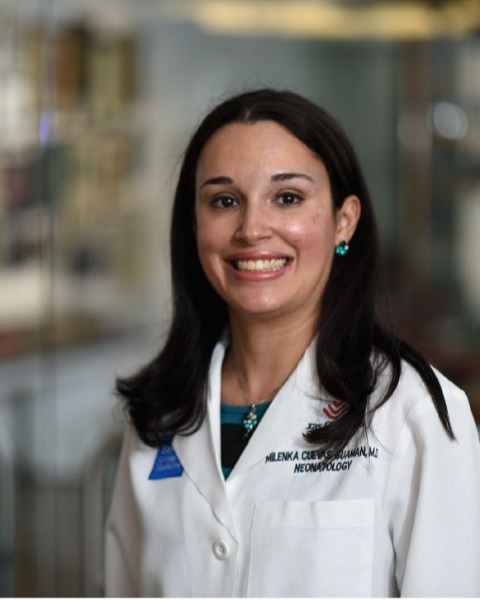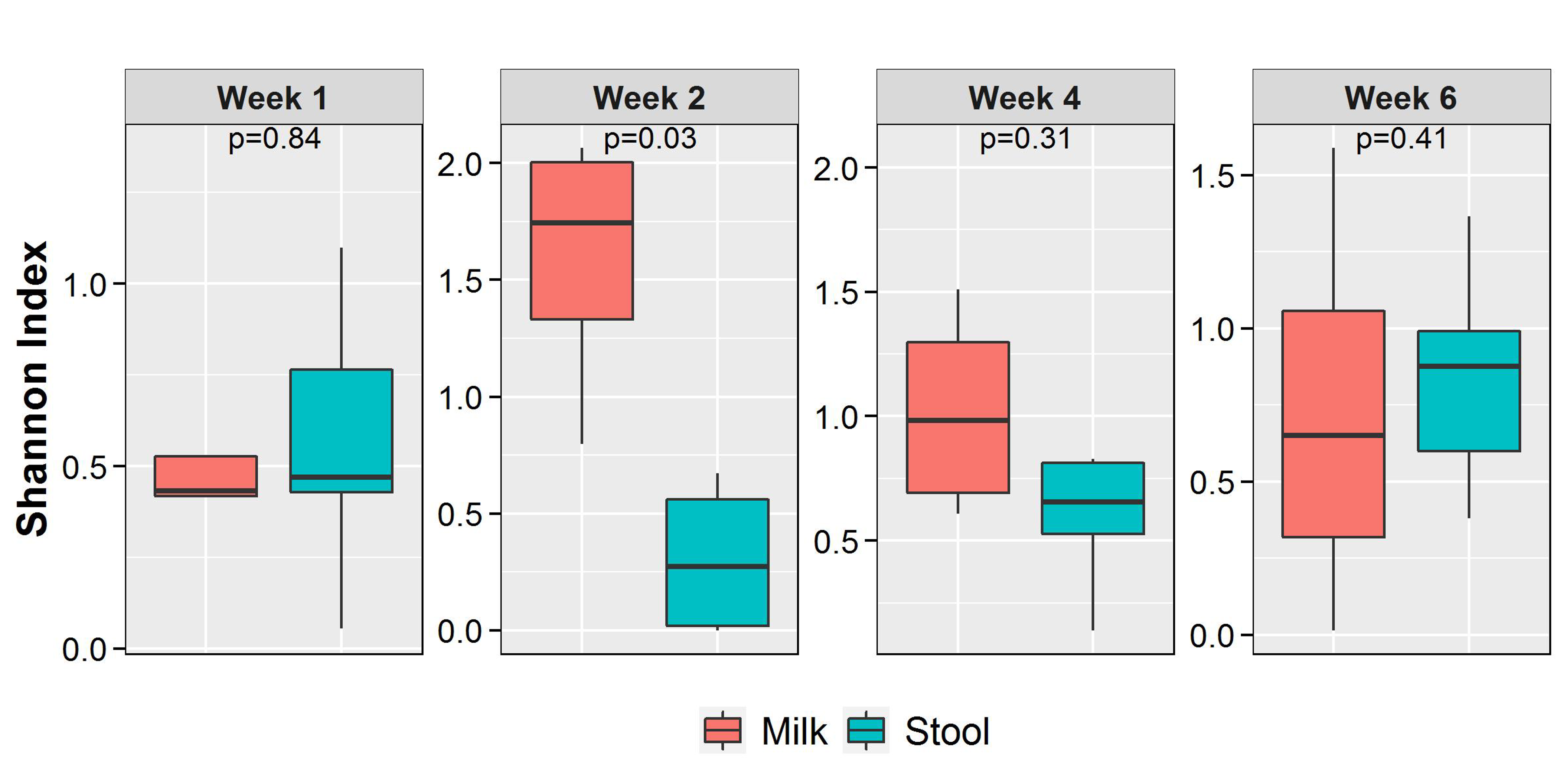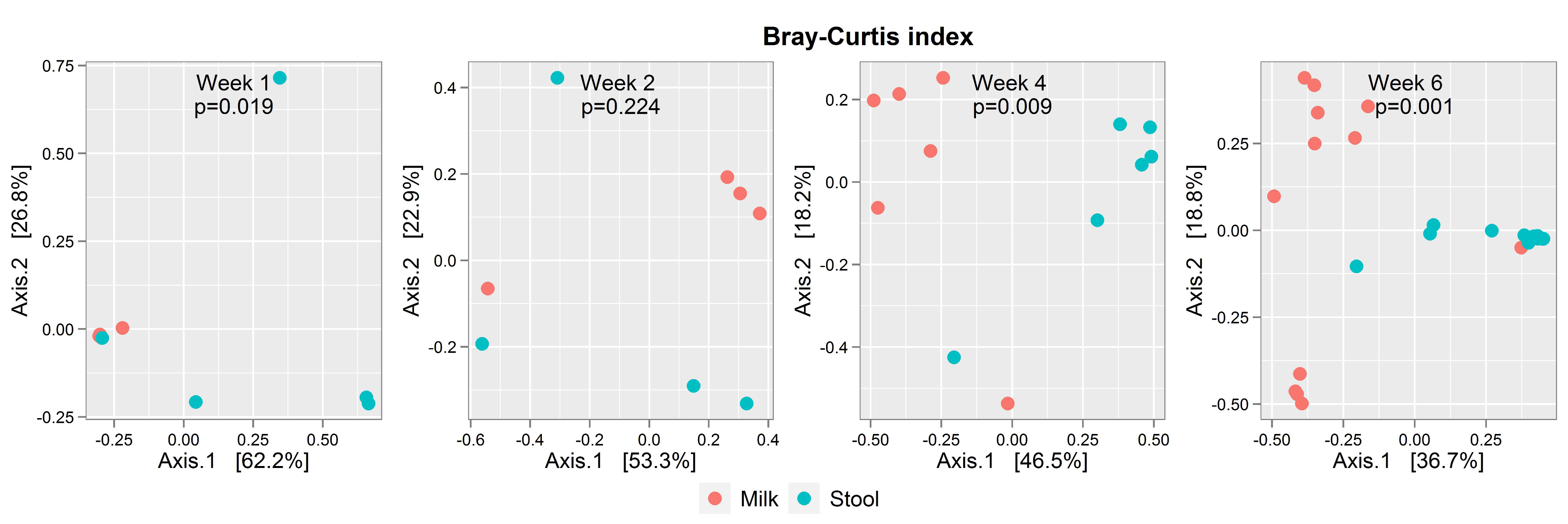Breastfeeding/Human Milk
Category: Abstract Submission
Breastfeeding/Human Milk II
434 - Microbiota Development in Mother’s Own Milk and Preterm Infant Stool
Sunday, April 24, 2022
3:30 PM - 6:00 PM US MT
Poster Number: 434
Publication Number: 434.302
Publication Number: 434.302
Elena C. Itriago, Baylor College of Medicine, Houston, TX, United States; Santosh Thapa, Baylor College of Medicine, Houston, TX, United States; Steven Ford, University of South Florida College of Medicine, Tampa, FL, United States; Laura A. Gollins, Texas Children's Hospital, Houston, TX, United States; Geoffrey A. Preidis, Baylor College of Medicine and Texas Children's Hospital, Houston, TX, United States; Ruth Ann Luna, Baylor College of Medicine, Houston, TX, United States; Joseph Hagan, Baylor College of Medicine, Houston, TX, United States; Amy B. Hair, Baylor College of Medicine, Houston, TX, United States

Elena C. Itriago, MD (she/her/hers)
Assistant Professor
Baylor College of Medicine
Baylor College of Medicine
Houston, Texas, United States
Presenting Author(s)
Background: Mother’s own milk (MOM) is the ideal nutrition for premature infants. Preterm infants fed premature formula have altered gut microbiota and an increased risk of necrotizing enterocolitis compared to those fed MOM. How microbial communities develop in MOM and premature infant stool during the first weeks of life remains largely unknown.
Objective: To determine the patterns of microbiota development in MOM and premature infant stool from 1 to 6 weeks of life.
Design/Methods: Inborn infants < 1500 grams birth weight were enrolled after parental informed consent. Infants received an exclusive human milk-based diet, comprised of MOM or pasteurized donor human milk (DHM) when MOM was unavailable, and fortification with DHM-based fortifier. MOM intake was quantified, and human milk and stool samples were collected from 1 to 6 weeks of life for 16S rRNA sequencing. The sequence data with >500 reads/sample were analyzed using DADA2 and QIIME2 pipelines for estimating the composition, richness, and diversity of the microbial community in MOM and stool samples over time.
Results: The study consisted of 19 infants with a gestational age of 28 ± 1.8 weeks (mean ± SD) and birth weight of 1085 ± 292 grams with matching weekly MOM (N = 27), and infant stool (N = 27) samples were included. MOM intake over the first 6 weeks of life was 90.8 ± 12.7%. Microbial community composition (Bray-Curtis index) in MOM samples was dissimilar (p < 0.05) compared to infant stool at weeks 1, 4, and 6. At 2 weeks of life, MOM had increased microbial richness (22.2% change in the operational taxonomic units, p=0.03) and diversity (36.8% change in Shannon index, p=0.03) compared to infant stool. At the taxonomic level, relative abundances of the three genera (Staphylococcus, Pseudomonas, and Acinetobacter) and an unclassified member of the family Enterobacteriaceae were significantly increased in MOM samples compared to abundances in infant stool at week 6 of life (p < 0.05). Interestingly, Pseudomonas was found in MOM samples but not in stool samples at weeks 2 to 6 of life.Conclusion(s): Microbial communities in MOM and neonatal stool are distinctly different and develop independently during the first 6 weeks of life. Why Pseudomonas is highly abundant in MOM but absent in neonatal stool warrants further investigation.
Shannon Diversity Index of Mother's Own Milk and Infant Stool Samples
Bray-Curtis Index of Mother's Own Milk and Infant Stool Samples
Objective: To determine the patterns of microbiota development in MOM and premature infant stool from 1 to 6 weeks of life.
Design/Methods: Inborn infants < 1500 grams birth weight were enrolled after parental informed consent. Infants received an exclusive human milk-based diet, comprised of MOM or pasteurized donor human milk (DHM) when MOM was unavailable, and fortification with DHM-based fortifier. MOM intake was quantified, and human milk and stool samples were collected from 1 to 6 weeks of life for 16S rRNA sequencing. The sequence data with >500 reads/sample were analyzed using DADA2 and QIIME2 pipelines for estimating the composition, richness, and diversity of the microbial community in MOM and stool samples over time.
Results: The study consisted of 19 infants with a gestational age of 28 ± 1.8 weeks (mean ± SD) and birth weight of 1085 ± 292 grams with matching weekly MOM (N = 27), and infant stool (N = 27) samples were included. MOM intake over the first 6 weeks of life was 90.8 ± 12.7%. Microbial community composition (Bray-Curtis index) in MOM samples was dissimilar (p < 0.05) compared to infant stool at weeks 1, 4, and 6. At 2 weeks of life, MOM had increased microbial richness (22.2% change in the operational taxonomic units, p=0.03) and diversity (36.8% change in Shannon index, p=0.03) compared to infant stool. At the taxonomic level, relative abundances of the three genera (Staphylococcus, Pseudomonas, and Acinetobacter) and an unclassified member of the family Enterobacteriaceae were significantly increased in MOM samples compared to abundances in infant stool at week 6 of life (p < 0.05). Interestingly, Pseudomonas was found in MOM samples but not in stool samples at weeks 2 to 6 of life.Conclusion(s): Microbial communities in MOM and neonatal stool are distinctly different and develop independently during the first 6 weeks of life. Why Pseudomonas is highly abundant in MOM but absent in neonatal stool warrants further investigation.
Shannon Diversity Index of Mother's Own Milk and Infant Stool Samples

Bray-Curtis Index of Mother's Own Milk and Infant Stool Samples

